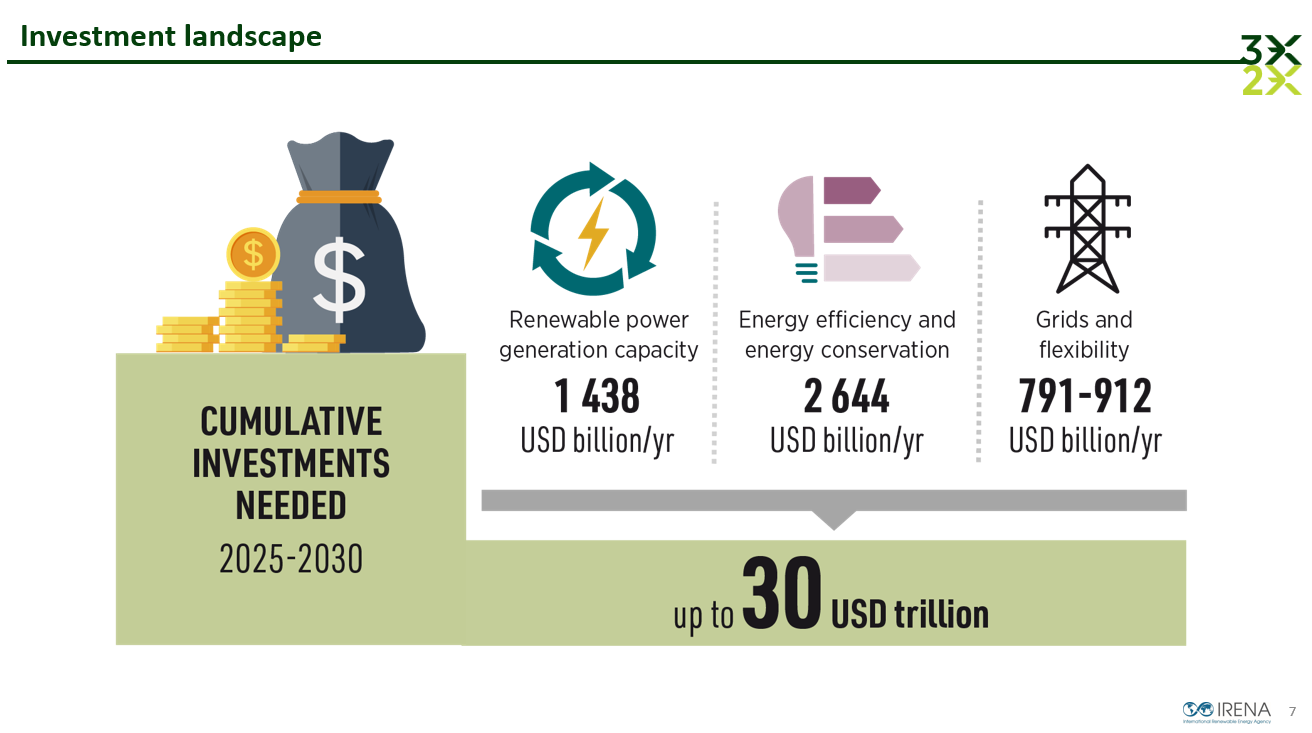Global Energy Transition Falters Despite Record Growth - Why the Pace Is Still Not Enough for the 1.5 °C Goal
Abu Dhabi (UAE) / Brasília (Brazil) - The global energy transition is not progressing fast enough, despite a record-breaking expansion of renewable energy in 2024. A new report by IRENA, the Brazilian COP30 Presidency, and the Global Renewables Alliance (GRA) identifies significant shortfalls in investment, grid infrastructure, and policy targets - with immediate relevance for the upcoming UN Climate Conference COP30.
Record Growth in Renewables - But Targets Remain Out of Reach
In 2024, a record 582 GW of renewable energy capacity was installed worldwide - more than ever before. However, this progress is not enough to reach the COP28-agreed goal of tripling capacity to 11.2 TW by 2030. The report, "Delivering on the UAE Consensus", shows that starting in 2025, about 1,122 GW of additional capacity would need to be installed annually, which according to IRENA would require a yearly growth rate of 16.6%.
Action is needed not only in expanding renewables. Progress in energy efficiency also falls significantly short. Currently, global energy efficiency is improving by just 1% per year - far below the 4% needed to meet climate goals. As a result, the world remains off track to limit global warming to 1.5°C.
Investment, Grids, and Supply Chains: Core Tasks for Energy Transition Success
The report's authors urge governments to update their national climate plans (NDC 3.0) ahead of COP30 in Belém, to set more ambitious targets for renewable energy, and to increase annual investments in renewables to at least $1.4 trillion between 2025 and 2030. For comparison, only $624 billion was invested in 2024.
In addition, major economies are expected to agree on a new target for international climate finance - the New Collective Quantified Goal (NCQG). A proposed benchmark of $1.3 trillion annually is on the table, aimed primarily at supporting climate action in developing and emerging countries. The exact NCQG amount is to be decided at COP29 in Azerbaijan.
Beyond direct investment in renewables, the report stresses the urgent need for investment in electricity grids, supply chains, and production technologies for solar and wind power, battery storage, and hydrogen. Grid expansion alone will require $670 billion per year by 2030 to integrate new capacity and ensure reliable supply. Energy storage is also essential for grid stability and integration.
On the supply chain side, fair and transparent trade practices for key renewable technologies should be guaranteed, and international cooperation should be pursued to secure trade corridors for critical materials and components.

Global Energy Transition: Faster Pace and Bolder Targets Required
The new report makes it clear: The progress made in recent years is an important step forward - but still far from sufficient to meet global climate goals. Ahead of COP30 in Belém, the global community faces the challenge of adopting more ambitious climate plans and significantly increasing investment commitments.
António Guterres, UN Secretary-General, emphasized the urgency based on the IRENA report findings: “The clean energy revolution is unstoppable. Renewables are deployed faster and cheaper than fossil fuels - driving growth, jobs, and affordable power.” At the same time, he warned that the window to keep the 1.5°C target alive is “rapidly closing.”
Francesco La Camera, Director-General of IRENA, underlined the economic dimension: “Renewables are not just the most cost-effective climate solution; they are the biggest economic opportunity of our time.” He called for more ambitious targets, modernized grids, and scaled-up clean technologies. “Every dollar invested brings growth, jobs, and energy security.”
Ben Backwell, Chair of the Global Renewables Alliance, highlighted the private sector’s contribution: “The private sector is driving the energy transition, providing three-quarters of global clean energy investment.” He urged governments to adopt long-term strategies that support not just capacity expansion but also grid and storage development. This report shows that the march to renewable energy abundance is underway - and it’s time for us to accelerate.”
Source: IWR Online, 17 Oct 2025
